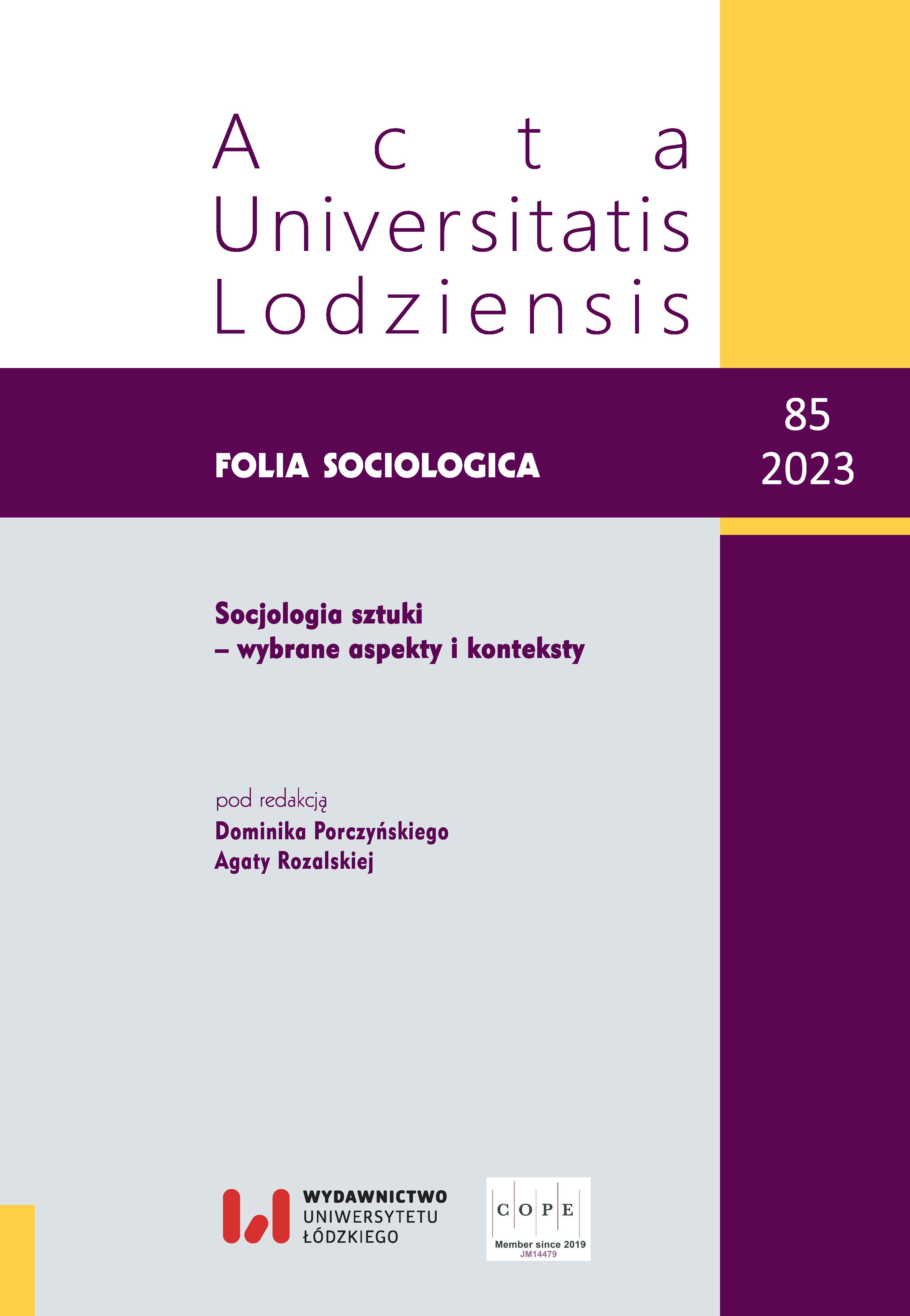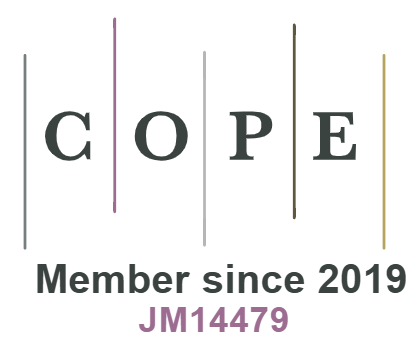Metaverse and its creative potential for visual arts
DOI:
https://doi.org/10.18778/0208-600X.85.04Keywords:
Metaverse, virtual reality, NFT, digital art, sociology of artAbstract
The National Centre for Culture is conducting a foresight research project on the impact of emerging technologies on the arts. The article presents the first findings brought by the analysis of opportunities created by the development of virtual spaces accessible to artists and the public – which are expected to create the Metaverse and promote a new form of ownership, NFT. The text is dedicated to the potential of new tools and media – the positive side of the interface between modern technologies and art. The article offers definitions of the Metaverse, NFT and digital art. Apparently, these elements of social (and technological) reality not only overlap, but also complement each other. The text attempts to answer the question of what potential the next phase of digital transformation brings for visual artists.
References
Ball M. (2022), The Metaverse: And How It Will Revolutionize Everything, Liveright Publishing Corporation, New York.
Google Scholar
Bandoch J. (2021), Algorytmy kontra ludzie. Niesocjologiczna analiza wpływu nowych technologii na życie społeczne, “Studia Socjologiczne”, no. 3(242), pp. 165–174.
Google Scholar
Barrière L. (2019), Exploring Randomness in Digital Art, [in:] Proceedings of Bridges 2019: Mathematics, Music, Art, Architecture, Education, Culture, pp. 569–574, Linz, Austria, July 16th – 20th.
Google Scholar
Bashir I. (2023), Mastering Blockchain, PactPublishing (early access).
Google Scholar
Doyle D. (2015), New Opportunities for Artistic Practice in Virtual Worlds, IGI Global, Hershey, https://doi.org/10.4018/978-1-4666-8384-6
Google Scholar
DOI: https://doi.org/10.4018/978-1-4666-8384-6
Hyun-Kyung L., Soobin P., Yeonji L. (2022), A proposal of virtual museum metaverse content for the MZ generation, “Digital Creativity”, vol. 33(2), pp. 79–95, https://doi.org/10.1080/14626268.2022.2063903
Google Scholar
DOI: https://doi.org/10.1080/14626268.2022.2063903
Khan F., Kothari R., Patel M., Banoth N. (2022), Enhancing Non-Fungible Tokens for the Evolution of Blockchain Technology, [in:] 2022 International Conference on Sustainable Computing and Data Communication Systems (ICSCDS), pp. 1148–1153, https://doi.org/10.1109/ICSCDS53736.2022.9760849
Google Scholar
DOI: https://doi.org/10.1109/ICSCDS53736.2022.9760849
Klütsch C. (2005), The summer 1968 in London and Zagreb: starting or end point for computer art?, [in:] Proceedings of the 5th conference on Creativity & cognition (C&C ’05), Association for Computing Machinery, New York, pp. 109–117, https://doi.org/10.1145/1056224.1056241
Google Scholar
DOI: https://doi.org/10.1145/1056224.1056241
McAndrew C. (ed.) (2022), The Art Market 2022, Art Basel and USB.
Google Scholar
Myoo S. (2012), Lepiej chodźmy zapytać robota… (wstęp do technoantropologii), “Przegląd Filozoficzny. Nowa Seria”, vol. 21, no. 2(82), pp. 363–376, https://doi.org/10.2478/v10271-012-0046-x
Google Scholar
Myoo S. (2016), Twórcze roboty, “Przegląd Filozoficzny. Nowa Seria”, vol. 25, no. 2(98), pp. 115–126.
Google Scholar
Ornes S. (2022), Virtual reality helps shape and respond to artistic impulses, “PNAS”, vol. 119(31), https://doi.org/10.1073/pnas.2210323119
Google Scholar
DOI: https://doi.org/10.1073/pnas.2210323119
P ark S.-M., K im Y.-G. (2022), A Metaverse: Taxonomy, Components, Applications, and Open Challenges, “IEEE Access”, vol. 10, pp. 4209–4251, https://doi.org/10.1109/ACCESS.2021.3140175
Google Scholar
DOI: https://doi.org/10.1109/ACCESS.2021.3140175
Postman N. (2004), Technopol. Triumf techniki nad kulturą, transl. A. Tanalska-Dulęba, Wydawnictwo Literackie Muza, Warszawa.
Google Scholar
Richter H. (1997), Dada art and anti-art, Thames & Hudson, London.
Google Scholar
Riva G., Wiederhold B.K. (2022), What the Metaverse Is (Really) and Why We Need to Know About It, “Cyberpsychological, Behavior and Social Networking”, no. 25(6), pp. 355–359, https://doi.org/10.1089/cyber.2022.0124
Google Scholar
DOI: https://doi.org/10.1089/cyber.2022.0124
Shields R. (2003), The Virtual, Routledge, New York.
Google Scholar
Stephenson N. (2020), Śnieżyca, transl. W. Szypuła, Wydawnictwo Mag, Warszawa.
Google Scholar
Toffler A. (2001), Trzecia fala, transl. E. Woydyłło, Państwowy Instytut Wydawniczy, Warszawa.
Google Scholar
Walewska-Choptiany J. (2021), Cyfrowa dekada. Związki sztuki i technologii w latach 1960–1975, Wydawnictwo Naukowe Uniwersytetu Mikołaja Kopernika, Toruń.
Google Scholar
Whitaker A. (2019), Art and Blockchain. A Primer, History, and Taxonomy of Blockchain Use Cases in the Arts, “Artivate: A Journal of Entrepreneurship in the Arts”, vol. 8, no. 2, pp. 21–46, https://doi.org/10.1353/artv.2019.0008
Google Scholar
DOI: https://doi.org/10.1353/artv.2019.0008
Wiśniewski R., Bukalska I. (2020), The Interactive Dimension of Creating Cultural Artifacts Using Agile Methodologies, “Qualitative Sociology Review”, vol. 16, no. 4, https://doi.org/10.18778/1733-8077.16.4.12
Google Scholar
DOI: https://doi.org/10.18778/1733-8077.16.4.12
Downloads
Published
Versions
- 2023-08-31 (2)
- 2023-07-10 (1)
How to Cite
Issue
Section
License

This work is licensed under a Creative Commons Attribution-NonCommercial-NoDerivatives 4.0 International License.










